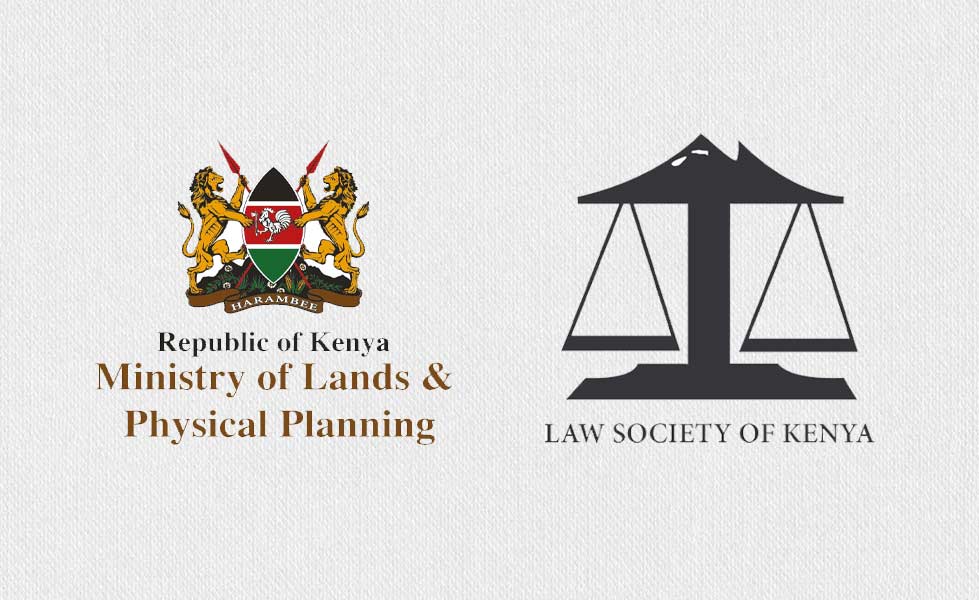On August 3, 2023, a landmark Memorandum of Understanding (MOU) was signed between the Ministry of Lands, the Law Society of Kenya, the Institution of Surveyors of Kenya, and the Kenya Bankers Association with a view to improving the current process of obtaining sectional titles for relevant properties. This historic agreement marks a pivotal moment in the real estate and finance sectors in Kenya, addressing a long-standing bottleneck that has hindered the efficient processing of sectional title deeds. The MOU introduces innovative provisions that are set to revolutionise the way sectional properties are titled, unlocking capital, boosting confidence, and streamlining transactions.
Key Provisions
A Memorandum of Understanding (MOU) and a contract serve as written agreements between two or more parties, yet they exhibit notable distinctions. MOUs are characterised by informality and lack of legal binding, allowing parties flexibility in fulfilling agreement terms. Despite this, MOUs prove beneficial for establishing a cooperative framework and delineating shared goals.
On the other hand, contracts are formal, legally binding documents, that create enforceable obligations. Breaching a contract triggers the possibility of legal action for compliance. The decision to choose between an MOU and a contract hinges on specific circumstances, with considerations such as negotiation stages, the need for legal enforceability, and the desire to avoid the time and cost associated with formal contracts.
In the real estate sector, MOUs commonly find application in the initiation of partnerships, joint ventures, or cooperative agreements for specific projects. These agreements lack legal enforceability but provide a foundation for collaboration. In contrast, contracts in real estate transactions, whether for sales, purchases, leases, financing, or property management, are legally binding, ensuring that parties fulfil the specified terms. For example, in the real estate industry, an MOU might be utilised by a developer and an investor exploring a mixed-use project. Although not legally binding, the MOU outlines shared goals, roles, and responsibilities, facilitating cooperation in the development process. Conversely, a contract may come into play when a buyer and a seller formalize the sale of a single-family home.
This legally binding agreement details the purchase price, closing date, and financing terms, obligating both parties to adhere to the specified terms. The MOU introduces transformative provisions that streamline the conventional processes related to sectional property titling:
- Conditional Registration of Sectional Properties: A game-changer in the titling process, the introduction of conditional registration for sectional properties signifies that properties can now be registered without the need for full compliance with all legal requirements at the outset. This significant step expedites the titling process, removing unnecessary barriers and unlocking the potential of sectional properties.
- Proof of Initiation of Geo-Referencing: Ensuring accuracy and adherence to modern mapping technologies, the MOU mandates that sectional property owners must furnish proof that they have initiated the process of geo-referencing their apartments before they can qualify for conditional registration. This proactive approach ensures compliance and aligns property records with current mapping standards.
- Six-Month Moratorium for Investors: Recognising the complexities involved in the titling process and the need for flexibility for property owners, the MOU grants a six-month moratorium to investors who own apartments. This provision allows investors ample time to address any outstanding issues and obtain titles for their properties, fostering a supportive environment for investment and property ownership.
Benefits of the MOU
One of the most significant impacts of the MOU is the unlocking of a substantial amount of capital currently tied up in banks. The expedited titling process will release these funds, injecting much-needed liquidity into the market and stimulating economic growth. This boost in liquidity will revitalise the real estate sector, enabling developers to undertake new projects and homeowners to access mortgages.
The MOU instils a sense of confidence in the real estate market by reducing the risk of delays and disputes associated with sectional property titling. Investors and buyers can now engage in transactions with greater assurance, knowing that their investments are supported by a streamlined and transparent titling process. This renewed confidence will encourage increased investment, market activity, and overall growth in the real estate sector.
The MOU eliminates the need for multiple applications and approvals, streamlining transactions in the real estate sector. This efficiency is expected to attract more investors, expedite property transfers, and reduce transaction costs for both buyers and sellers. Streamlined transactions will foster a more dynamic and responsive real estate market, benefiting all stakeholders.
Buyers will benefit from improved transparency in the ownership verification process. The MOU facilitates easier access to information, making it simpler for individuals to confirm the ownership details of sectional properties before making purchasing decisions. This enhanced transparency will reduce the risk of fraud and promote informed decision-making in property transactions.
The MOU mitigates the risk of disputes arising from the titling of sectional properties. The conditional registration and geo-referencing requirements contribute to a more rigorous and accurate titling process, reducing the likelihood of conflicts. This reduction in disputes will promote a more harmonious and stable real estate market.
Buyers will experience enhanced certainty in their property transactions as the MOU ensures a clear and expedited titling process. This certainty is fundamental in attracting new buyers, promoting investment, and instilling confidence in the real estate market. Increased buyer certainty will drive market growth and stability.
Conclusion
The MOU on Sectional Property Titling stands as a landmark development that is set to redefine the landscape of real estate and finance in Kenya. As the MOU unfolds, its positive impact is expected to resonate, unlocking capital, reducing risks, and providing a solid foundation for the sustainable growth of the real estate market in Kenya. Stakeholders are encouraged to embrace and leverage these changes to propel the industry into a prosperous future.





